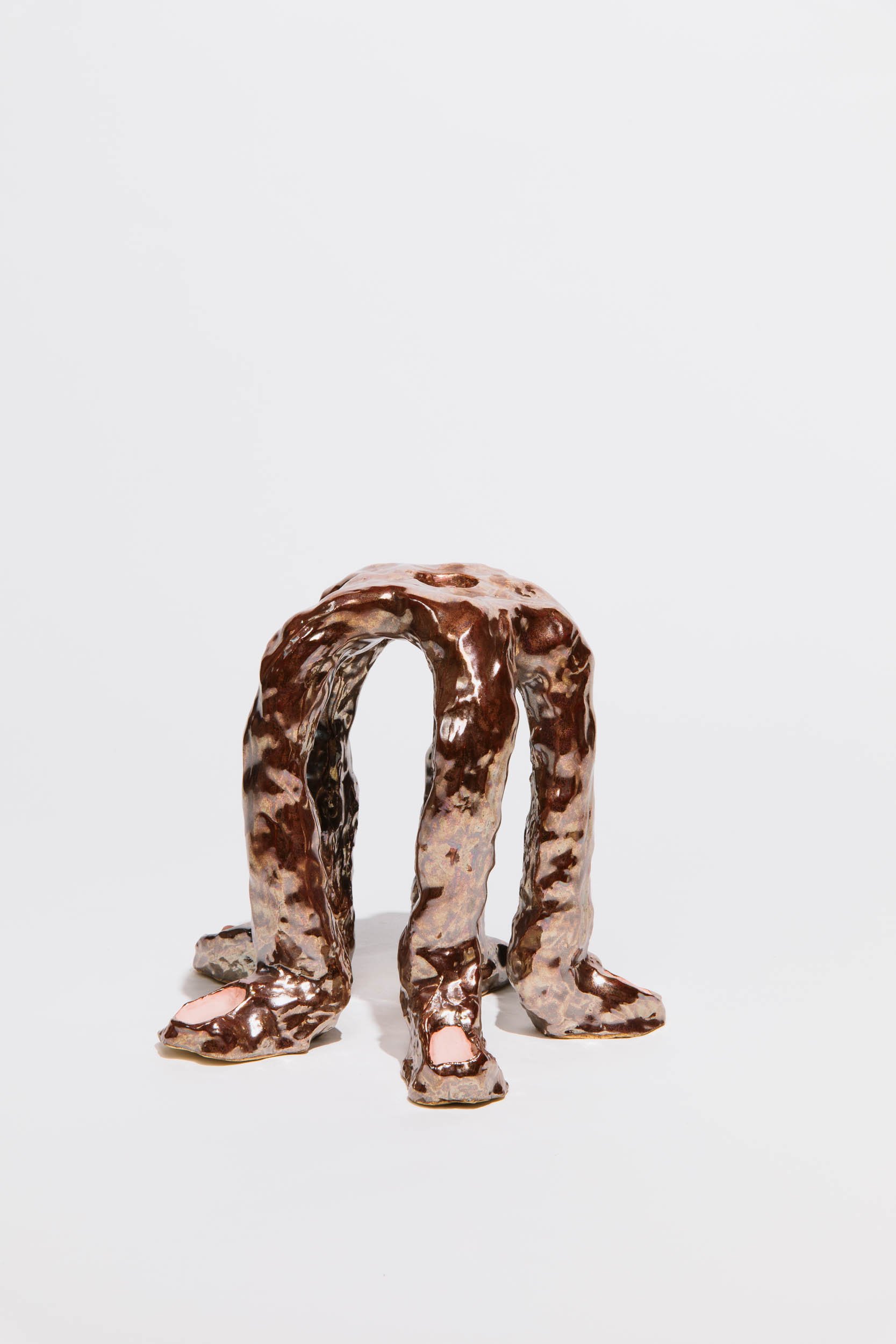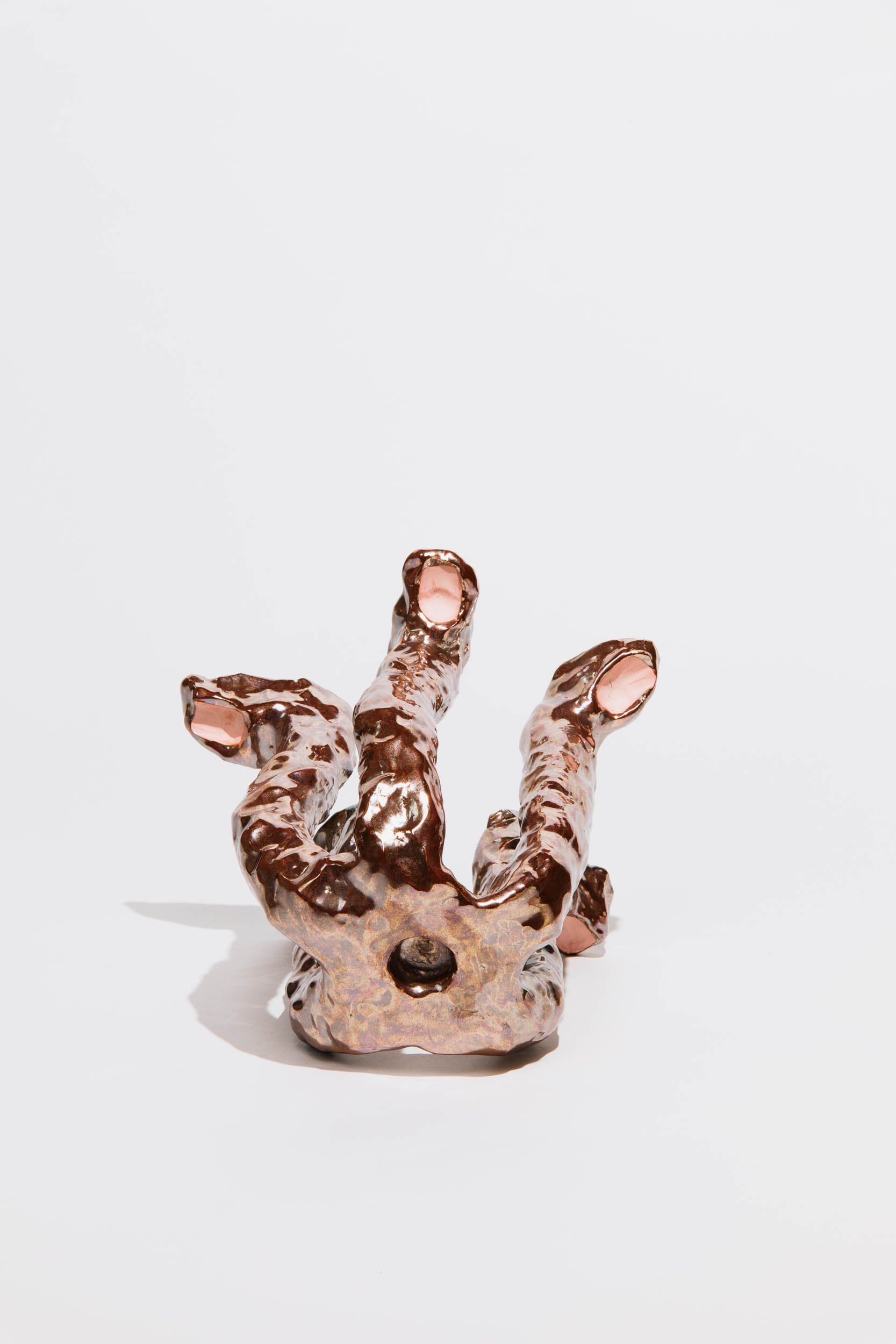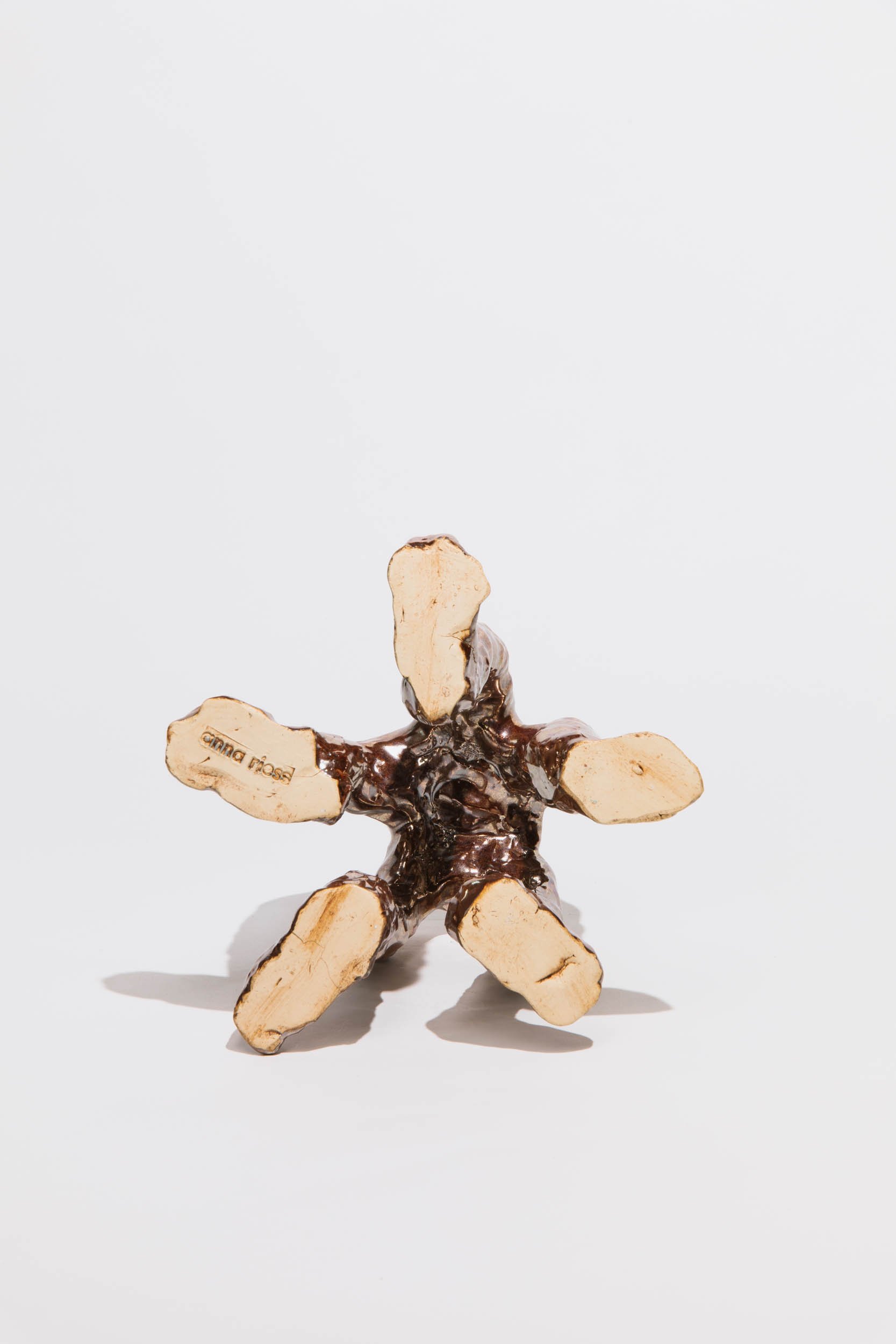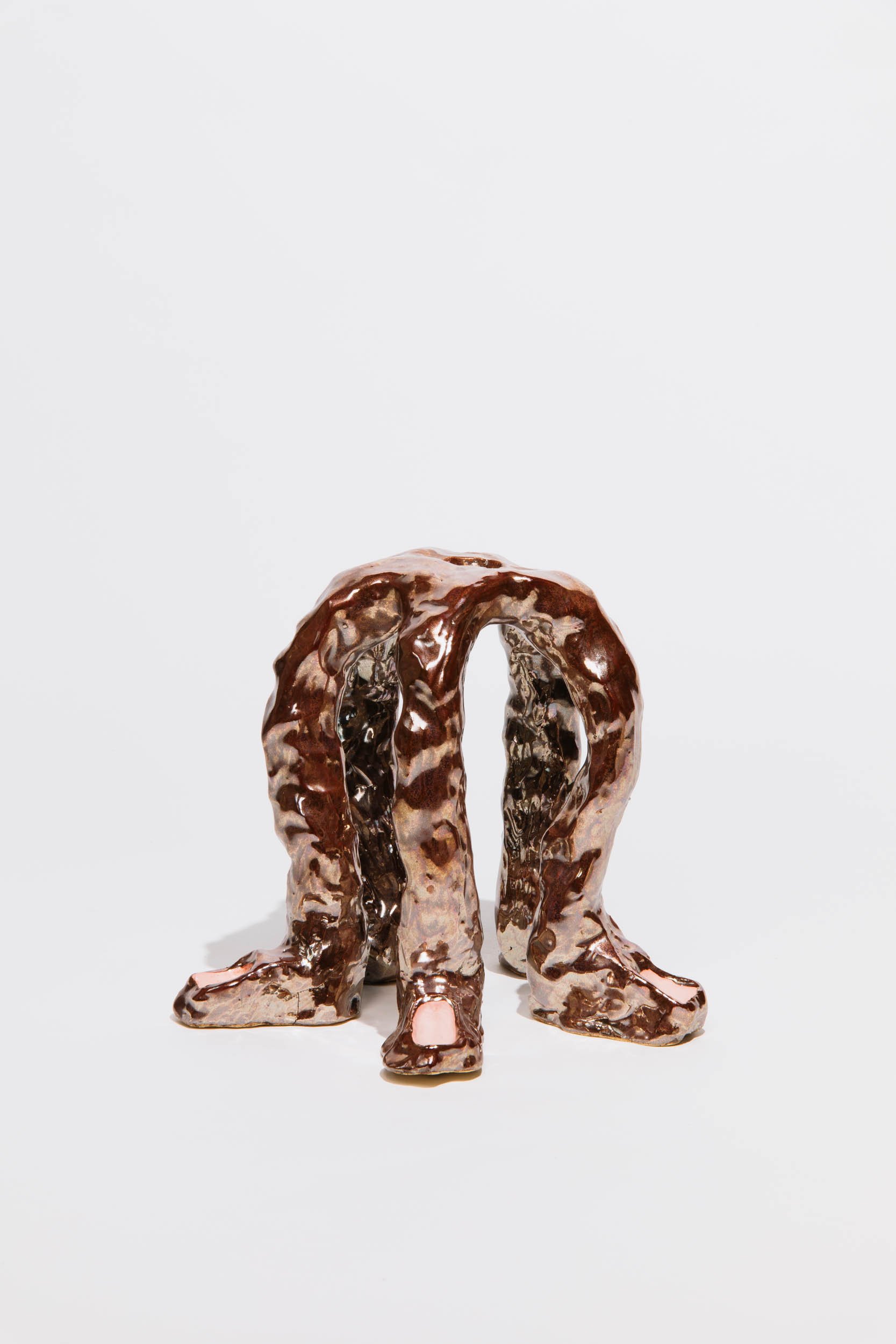Anna Riess, 'Octopus with nails', ceramic object, 2024




Anna Riess, 'Octopus with nails', ceramic object, 2024
This large-scale ceramic sculpture, glazed in a lustrous metallic sheen and detailed with vivid, painted pink nails, takes the form of an octopus—its many arms extended in different directions, as if caught mid-motion. Both captivating and uncanny, the piece speaks to the complexity of care, labor, and sacrifice. For Anna Riess, the octopus becomes a fitting stand-in for the multitasking caretaker: stretched thin, endlessly capable, yet ultimately vulnerable.
The glossy surface reflects its surroundings—like the roles one reflects in caretaking—while the bright nails add a humanizing, feminized touch to the creature’s limbs. It’s at once playful and poignant. The octopus, a symbol of adaptability and intelligence, is also biologically fated: in nature, the mother octopus dies shortly after giving birth. That quiet tragedy pulses beneath the surface here.
With this work, Riess fuses myth and biology, object and emotion. The tentacles seem to reach outward in all directions—holding, helping, handling. Beneath the shimmer of the glaze lies a deeper narrative about the invisible labor that sustains life. It’s a tribute not just to what caretakers do, but to what they give up in the process.
Anna Riess is a multidisciplinary artist and cultural anthropologist based in Vienna. Her work explores themes of embodiment, emotion, and interbodily relations through materials like clay, metal, and textiles. Deeply influenced by her experience of motherhood, she transforms everyday objects into symbolic forms - one of her gestures she describes as the “nippelization of the everyday.”
Riess is the co-founder of the Clayground retreat and the creator of Circle of Clay, a workshop series she has led at institutions such as the Museum of Applied Arts in Vienna or the Hotel Kai36 in Graz. Her workshops invite participants—regardless of prior experience—to develop their own sculptural language through hands-on engagement with clay.
Her sculptural objects possess a strong visual identity and tactile presence, marked by a recognizable aesthetic and a willingness to push the boundaries of material behavior. Especially drawn to the tactility of clay, Riess explores how movement and fluidity can be captured in form—leaving the trace of the hand visible in its hardened state. With a strong interest in local materials and interdisciplinary exchange, her practice bridges artistic, social, and ecological concerns in both conceptual and applied ways.